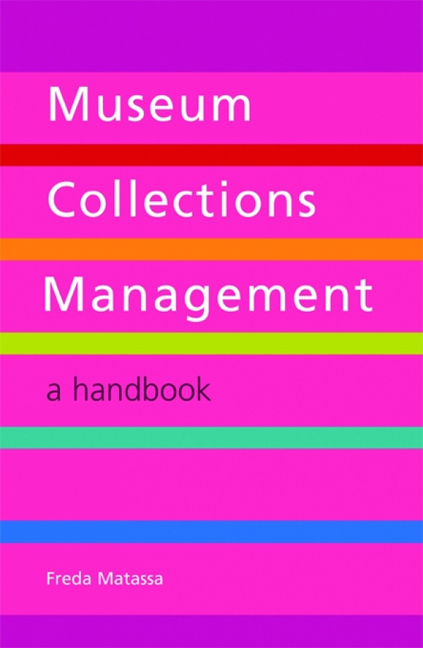6 - Movement
from Part 2 - Collections management: processes
Published online by Cambridge University Press: 08 June 2018
Summary
Fundamentals
Cultural objects can be old, fragile, valuable and often irreplaceable. Handling should be planned with care, and movement should be kept to a minimum in order to reduce the risk of damage or breakage. The necessity of any handling or movement should always be questioned.
Objects can often be condition‑checked, studied, photographed or inven ‑ toried without being picked up. The same applies to moves. Objects are often moved from one place to another only to be moved back again, when careful inspection in situ might suffice. Museum objects are often brought from store to gallery to be selected for display, most of them being returned and only a few exhibited. This unnecessary movement may cause stress from unwrapping and handling, vibrations during movement and exposure to light. Objects are often transported to the conservation or photography studio, when it would be safer, cheaper and more sustainable for the conservator or photographer to come to the object.
Museums should be clear about the reasons for handling or moving any object. Some items may present significant difficulties, such as very large or heavy pieces. In such cases, the time and resources required for a safe move should be considered before the decision is made to move them. It may be that the object doesn't have to be moved after all, or that it would be too costly or too risky.
The majority of moves are, however, for good reasons: for exhibition and display, for loan, conservation, photography or study, or to re‑house an object in better facilities. Handling can be done safely with no risk to the object and a move, if carefully planned and carried out with the appropriate time and equipment, should result in a well‑executed operation and the safety and security of all concerned.
For moves of particularly large, heavy or complex objects or of a large number of items, a museum may have in‑house expertise or it may need to contract an external fine art transport company. The principles are the same and the museum should be clear about the job to be done before negotiating the details. Be realistic about how long the move will take and the fact that the objects may be unavailable for some time.
- Type
- Chapter
- Information
- Museum Collections Management , pp. 95 - 122Publisher: FacetPrint publication year: 2011



